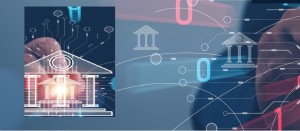The writing is on the wall for U.S. banks, suggesting a potential dent in the booming profits they’ve enjoyed from the Federal Reserve’s high-interest rate environment.
With customer pressure mounting and the looming need to offer higher depositor rates, the finance world is on edge. While these banks have bathed in the luxury of charging heftier loan rates, their day of reckoning is nearing.
The Golden Days of Banking?
Major consumer banks, like JPMorgan Chase and Wells Fargo, have reveled in the ability to rake in higher loan charges, thanks to the Fed’s decision to elevate benchmark interest rates to levels not seen in over two decades.
And while these institutions have feasted on these benefits, they’ve been stingy, hesitating to pass on similar high savings rates to their everyday retail customers.
Recent financial reports showcase a bright picture for these financial titans. Their third-quarter earnings unveiled impressive year-on-year profits in lending – numbers that beat even the most optimistic market predictions.
Particularly, JPMorgan, the U.S. banking juggernaut, together with Wells Fargo, even ramped up their revenue predictions for the upcoming year.
Analyst Chris Kotowski, a known banking expert at Oppenheimer, seems baffled. He observes that everyone anticipated a significant cost squeeze on consumer deposits due to these rate fluctuations. Yet, that crisis moment remains elusive.
Are Bigger Banks Safer?
Bigger doesn’t always mean better. Or does it? When it comes to banking, perhaps it does. The larger banks have historically enjoyed a status of reliability.
Their massive size and critical role in the U.S. economy, as labeled by regulators, positions them on a different playing field. Their vaults swelled with billions during the pandemic, reducing the urgency to hang onto clients who sought better yields elsewhere.
But the smaller players haven’t been as fortunate. Regional banks across the U.S. landscape grapple with retaining deposits without dangling the carrot of higher payoffs to their clients.
Interestingly, even within the walls of JPMorgan, debates are raging. CEO Jamie Dimon seems to be at odds with his executive team over the impending need to yield to customer demands and offer increased saver rates.
While Dimon senses this shift may be closer than anticipated, other top execs within the company aren’t as convinced.
Meanwhile, over at Wells Fargo, CFO Michael Santomassimo acknowledges the inevitable. Although they’ve been blindsided by the slow pace of competitive pressures forcing higher depositor rates, he knows it’s just a matter of time before the tides turn.
Corporate-driven banks aren’t insulated either. Case in point: Citi. With a hefty two-thirds of its deposits nestled in corporate coffers, it’s found itself forking out higher interest rates. A comparison reveals a stark contrast in its offerings, compared to JPMorgan’s more conservative rates.
But with the Fed gunning to combat inflation aggressively, the federal funds rate hovers in the range of 5.25% and 5.5%. Market experts remain divided. While some wager on another rate hike this year, others foresee a long-term stagnation.
BlackRock’s leadership anticipates a shift in consumer behavior, with savers migrating from traditional bank deposits to avenues like money market mutual funds and bonds. The trigger? A halt in the Fed’s rate-raising spree.
Yet, amidst this looming storm, there’s a silver lining. Surprisingly, U.S. economic indicators still showcase robust health, contradicting gloomy recession forecasts.
A surge in credit card activity at Citigroup and declining provisions for potential loan defaults by giants like JPMorgan and Wells Fargo hint at a resilient financial landscape.
However, as Barnum points out, there’s no ignoring the robust 3.8% unemployment rate. And it’s this labor market that remains a crucial barometer for consumer credit health.
In conclusion, the U.S. banking behemoths might be riding high now, but as history and economics dictate, what goes up must come down. How they maneuver through this impending shift remains the million-dollar question.





